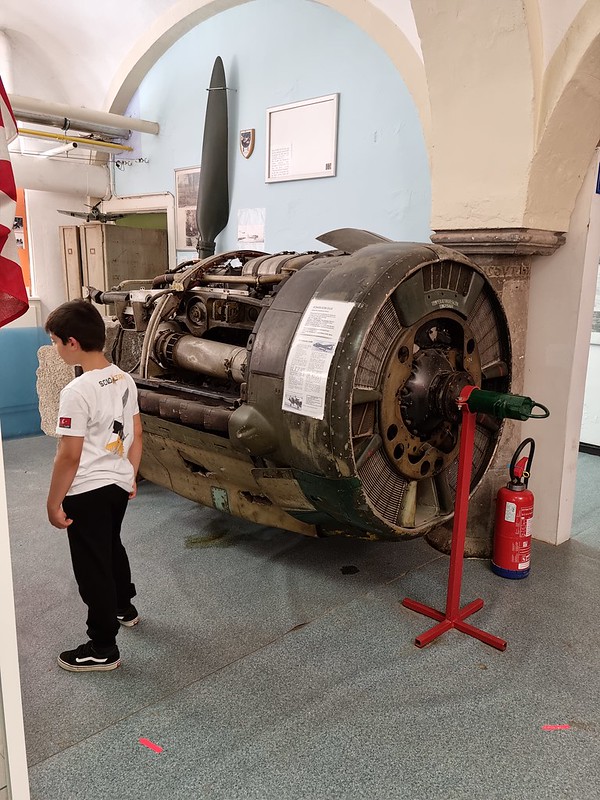I and my 10-year-old attended a fantastic theater performance on the evening of 11th December, 2021, Saturday. Actor and director Thomas Ryckewaert’s collaboration with Prof. Dr. Thomas Hertog turned out to be a unique experience for us, well beyond our expectations: “Move 37” was a delight for our eyes, ears, and minds!
Move 37: A kid has to know his AlphaGo Zero and Hawking radiation temperature
December 12, 2021
Science, Technology AlphaGo, Antwerp, Artifical Intelligence, Arts and Entertainment, Belgium, DeepMind, Einstein, game of Go, Hawking, kids, space Leave a comment
How to introduce the world of Hobbit to the kids?
September 15, 2021
Outdoors adventure, Belgium, hobbit, maaseik, Outdoors, park, Recreation Leave a comment
When my wife told me a few months ago that she wanted to do something different for her birthday, I was not expecting to spend a few days in a Hobbit house! She clearly had a plan, and we found ourselves in a magical world that is only 1.5 hours away from where we live.
The place is known as Warredal Recreation Park, and located in Ketelstraat, Maaseik, Belgium. But for our family, it’ll be always known as The Shire, or the Hobbit park.
I think the only disappointment the children had was their unfruitful attempts to discover actual hobbits running around, or hidden in the secret passages in the fantastic house where we spent the weekend.
Most of the time, the only noises we heard during the weekend were occasional horses neighing, or some birds singing. Of course, if you run out of wood to burn the stove that keeps the outside hot-tub’s water warm, you can go and hear yourself chopping some wood. Coming from the busy city of Antwerp, seeing less plastic and mostly wood and metal creates an interesting psychology.
From the architectural, fairy tale-like details to the landscape and horses, as well as deer and other animals going around, probably the only missing thing is the soundtrack of “The Hobbit” 🙂
Below you can find a few more videos and photographs depicting the scenery. There are many other adventures, recreational, and sports activities you can find in this big park, and I can very easily recommend the place, especially for the kids.
MoreHow can a child start with computer music? How about EarSketch?
August 23, 2021
Music, Programming, Technology EarSketch, kids, Music, programming, programming for kids Leave a comment
There are a myriad of ways to use computer programming to produce music. I’ve recently discovered “EarSketch“, a web-based computer music programming environment: https://earsketch.gatech.edu
According to Wikipedia: “EarSketch is a free educational programming environment. Its core purpose is to teach coding in two widely used languages, Python and JavaScript, through music composing and remixing. This learning environment was developed first at Georgia Institute of Technology (from 2011) under Prof. Jason Freeman (School of Music) and Prof. Brian Magerko (School of Literature, Media, and Communication). EarSketch is web-based, which means users can access it with their web-browsers, and with no installation. No account is required to create projects or view existing projects. EarSketch comprises different elements: a curriculum, a digital audio workstation (or DAW), a code editor and console, and a sound browser. EarSketch’s sound library was created by Young Guru, Jay Z’s sound engineer, and famous sound designer Richard Devine.”
After reading a recent article in Communications of ACM, titled “EarSketch: Engaging Broad Populations in Computing Through Music“, and watching the accompanying video, I decided to give it a try for my 10-year-old son.
Because I already started to teach him Python programming, I was happy to see that EarSketch supported Python in addition to JavaScript. Not being forced to install yet another application and having everything in the web browser made it super convenient. So far I’m happy to see my 10-year-old being super enthusiastic about EarSketch. After my initial introduction, he pushed me to teach him more about the system and started to create some crazy mix of music! 🙂
One of the strong points of EarSketch system is the curriculum embedded in the web application. It’s a pity that it’s not yet translated to Dutch but having crystal clear videos, in addition to tons of gradually progressive code and music examples help a lot.
MoreVisiting Historical Centre Air Base Brustem
August 16, 2021
Technology aircraft, airplane, aviation, Belgium, history, kids, military, museum, World War II Leave a comment
During the second week of August, 2021, we spent the weekend at Het Landsleven in Gingelom. Being only a few kilometers from the historical center of Sint-Truiden (south of Limburg), we decided to pay a visit to “Historical Centre Air Base Brustem“.
On a relatively hot Saturday afternoon, we were lucky that the museum didn’t have many visitors: the kids had a very special guided tour, with a very nice selection of aircraft posters.
If you are interested in the history of World War II and military aviation, you’ll spend a good few hours in this nice little museum.
For those into the history of jazz and cultural influence of USA in Europe, the museum has also some material about the “Nix Compris” jazz band, made up of military personnel stationed at this air base in Belgium, back in 1944 and 1945.
Roblox and Quantum Mechanics
August 10, 2021
Funny, Science, Technology Games, gaming, quantum, roblox, science Leave a comment
The year is 2021 and this Roblox thingy is getting a bit out of control, err… I mean too much science! 🙂

Of course, I’m all for science, and support the curiosity of my 10-year-old. But…
MoreHow complex are game programs?
July 6, 2021
Book, Development, Education, Programming, Technology books, Games, gaming, kids, Python Leave a comment
Two months ago, I decided to demonstrate to my son a few things about software programming, games and the effort/complexity behind the scenes. I had already showed him how to create very simple programs using Scratch, and nowadays I try to guide him with the help of a book titled “Programmeren voor kinderen – Python“.
My son is a Minecraft and Roblox enthusiast, and he asked me what it takes to create such programs from scratch. I told him maybe we should take a look at the internals of some existing games; after all, this is what I’ve done when I was almost his age: I and my friends read the source code of games designed for computers such as Commodore 64, Sinclair Spectrum ZX 48K, etc., and tried to modify them to our liking. As usual, Python and PyGame to the rescue!
MoreHow to organize a real birthday party in a virtual reality setting?
July 6, 2021
Technology Antwerp, Belgium, computers, computing, Games, gaming, kids, Virtual reality, VR Leave a comment
My older son turned 10 a few days ago, and I took this as an opportunity to introduce him and his friends to the fantastic world of Virtual Reality. And what better place than VR Mania in Antwerp to do this?
I didn’t have much experience with modern VR systems, apart from very brief exposure via some simulations in the last 10 years. Therefore, I didn’t know how a bunch of 10-year-old boys would react. On top of that, as far as I could see, VR Mania is much more than a simple VR gaming room and a VR escape room: with a lot of sensors placed in different locations, the players are localized in 3-D in real-time and one of the people working at VR Mania gives them tactical instructions creating a unique team experience.
I have to admit that I’ve never seen a group of 10-year-olds get so excited, shouting like crazy, feeling the thrill of the game, with so much enthusiasm, excitement and joy. I mean, while they were shooting at “zombies” and some crazy monsters! 🙂 They were totally in the “flow“, if I may say so.
After they finished the game, and took their seats in the cafeteria, cooling down, I asked them how long they thought they played: to my surprise, they agreed that they played about 15 minutes, and then, to their surprise, I told them that it was little more than 45 minutes! As the legendary bass player Stanley Clarke put it, it’s really “Funny How Time Flies (When You’re Having Fun)“.
The photos above don’t do justice to the pleasure the players enjoyed, you have to go there and experience it yourself:
After the birthday party, I thought about the technological landscape around me when I was 10 years old, 35 years ago: the most advanced computer gaming system I came across back in 1986 was an Atari 2600: I only had the opportunity to play with that machine a few times, when I visited the home of one of my classmates, and I can still vividly remember the excitement I had when I first held that joystick trying to master games such as “Pong” and “Basketball“.
Thinking about the computing capabilities of an Atari 2600 system and comparing that to what I witnessed in VR Mania 35 years later, the technological progress is truly dizzying even for an IT professional. I wonder what awaits my son 35 years from now, and I remember the wise words of the computing pioneer Alan Kay: “The best way to predict the future is to invent it.” I truly hope the wonderful experience my son and his friends had at VR Mania will be an inspiration for them to create their future.
What has the highest impact on education? An evidence-based approach
February 28, 2021
Development, Education Leave a comment
I’ve recently read “How We Learn: Why Brains Learn Better Than Any Machine … for Now” by Stanislas Dehaene, and thanks to that book, I’ve come across a valuable educational resource: “Teaching and Learning Toolkit, An accessible summary of the international evidence on teaching 5-16 year-olds“
This resource is prepared by Education Endowment Foundation, and it lists what kind of activity has the most impact at what level of financial cost, given the current evidence.
I was curious to see which activities had the highest impact, and it turned out to be the following:
- Metacognition and self-regulation: consistently high levels of impact, with pupils making an average of seven months’ additional progress. It can be achieved for very low financial cost, and is based on extensive evidence.
- Reading comprehension strategies: focusing on the learners’ understanding of written text. High impact for very low cost, based on extensive evidence.
- Feedback: information given to the learner or teacher about the learner’s performance relative to learning goals or outcomes. It should aim towards (and be capable of producing) improvement in students’ learning. Feedback redirects or refocuses either the teacher’s or the learner’s actions to achieve a goal, by aligning effort and activity with an outcome. High impact for very low cost, based on moderate evidence.
The Wanderer: One of the 25 Best Children’s Books of 2020 according to The New York Times
February 27, 2021
I’m a bit late to the party: it was only today that I learned about a fascinating book by the Belgian artist and author, Peter Van den Ende. Thanks to Radio Klara and Katelijne Boon, in today’s episode of “De Liefhebber“, I heard that Van den Ende’s book, “The Wanderer” (“Zwerveling” in Dutch) is listed among the “The 25 Best Children’s Books of 2020” of The New York Times (apparently it was on Belgian news last December, but I missed it).
“A paper boat is launched in the middle of the Pacific Ocean. It makes a long journey, meeting the strangest of beings, passing between towering mangroves and braving a devastating storm. It sails past a huge oil rig, plays with seals, is saved from sinking by a submarine and ends up at a city, where its passenger steps out onto a jetty.”
The praise by Publishers Weekly is more than enough to trigger my curiosity:
Charged with a current of imaginative power, Van den Ende’s artwork is like an Escher drawing leaning into oceanic and naval architecture.
Publishers Weekly
And after listening to the life story of this young author, one thing is certain: I’ll probably buy at least two copies of this new book, one for my kids, and one for myself. I also know at least a few people that will gladly consider this a nice gift.
How do we prepare our children for never-seen-before problems?
February 8, 2021
Education, Programming, Technology Leave a comment
The title of this blog post is taken from a question raised in “Computational Thinking Should Just be Good Thinking” by Mark Guzdial, Alan Kay, Cathie Norris, Elliot Soloway, published in November 2019 (Vol. 62, No. 11) issue of Communications of ACM.
How do we prepare our children for never-seen-before problems? We might start by redesigning TikTok and Fortnite.
There’s a lot of food for thought and critical questions raised in this short article. It also made me think about my sons: their interaction with all kinds of computers are heavily increasing as expected. My 9-year-old has some interest in programming (Python in particular), and an intensive, intrinsic motivation to explore more of Minecraft (as a creative activity with no bounds) and Roblox (this one is more as a competitive, adrenaline-inducing activity). My 3-year-old is also surrounded with a Smart TV, a tablet, and sometimes gets a sneak peak to his older brother’s digital creations.
Rather than teach computer science as a separate topic that might transfer, we should teach with computational models in every field.
I don’t know how it’ll be for my children in the future, but when I taught computer programming to children and teenagers, I generally tried to do it within the context of another domain, such as music, painting, or secret communications with your friends (cryptography, steganography, etc.) which resulted in good engagement most of the time.
My perspective can be summarized as the following: “computer programming” should not be considered and taught “only as a lucrative career choice“, but rather as a wonderful intellectual & creative activity that carries a lot of potential for empowering people of all ages. Of course there’s nothing wrong to make a career out of it and enjoy a prosperous life, but somehow I think that interpreting such an important educational activity only from a purely professional perspective is rather limiting for human minds in general. I think the article that led to this blog entry and similar research will continue to shed more light on our children’s educational future, and we should take this as an opportunity to contribute to the discussion, even if we’re not professional computer programmers.

























